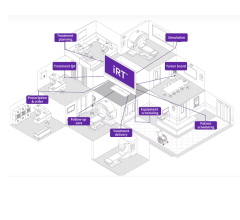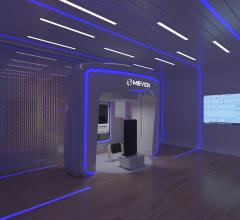April 1, 2013 — For more than three decades various forms of robotics have been effectively applied in healthcare to advance different types of medical treatment and surgical processes. Now, the nation’s first robotic positioning arm for proton therapy is being used by Loma Linda University Medical Center (LLUMC) to provide physicians improved access to tumors typically regarded as difficult to reach and treat.
An increasingly attractive alternative to standard photon beam radiation (or IMRT), a proton beam more effectively pinpoints cancerous tumors while minimizing contact with surrounding healthy bone and tissue. The robotic positioning arm at LLUMC’s James M. Slater Proton Treatment and Research Center takes that effectiveness one step further by giving physicians improved access to reach tumors such as those in the liver, breast, prostate and lung.
The user-friendly, computer-controlled robotic arm in use at Loma Linda is the most advanced proton technology found anywhere in the world and combines the flexibility and accuracy needed for optimal treatment of a tumor. The robotic arm decreases the time needed to position a patient for proton treatments and verifies the location and dose of the prescribed treatment based on the patient’s individualized treatment plan. By assuring such accuracy and controlling the movement of the patient during treatment, the hospital is better able to precisely and safely target the tumor in a way that provides the correct therapeutic dose and avoids harm to healthy tissues surrounding the tumor.
“In addition to successfully treating the cancer itself, a patient’s comfort during treatment is of the utmost importance to us,” said Jerry D. Slater, M.D., chairman of the LLUMC center. “Not only does the robotic positioning arm allow proton beams to reach tumors more precisely, it’s also very comfortable for patients and helps alleviate some of the fears that traditionally accompany cancer treatment.”
Based on the expanded reach that the robotic positioning arm allows, physicians at LLUMC are now working on new clinical trials to study the effects of proton treatment on various types of tumors. According to Slater, “Since we have installed the robotic positioning arm, we have launched additional research studies such as our breast cancer trial to more closely examine the effects of treatment on tumors previously considered difficult to reach.”
For more information: www.lomalindahealth.org


 December 04, 2025
December 04, 2025 









